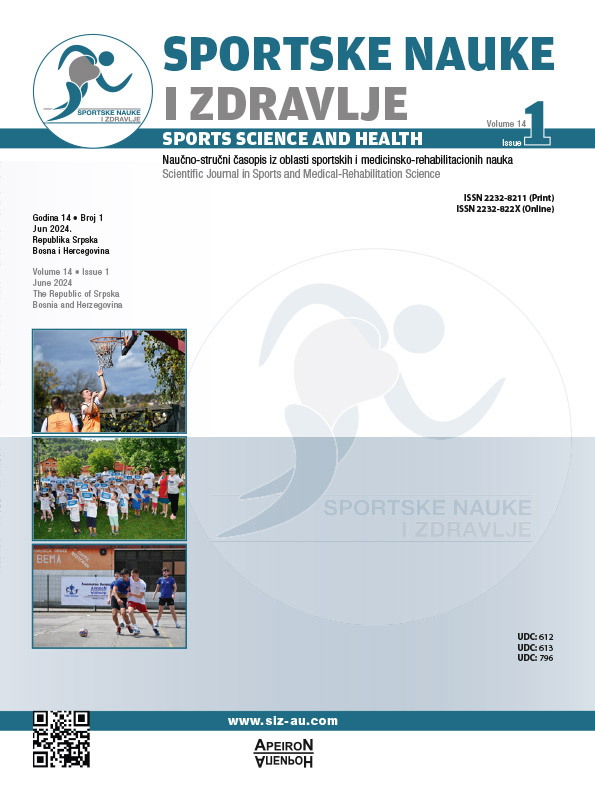The Long-Term Impact on Ankle-Brachial Index from Low Intensity Resistance Exercise with Blood Flow Restriction Technique: A Systematic Review
DOI:
https://doi.org/10.7251/SSH2401090LKeywords:
Ankle-brachial index, Blood flow restriction, Resistance trainingAbstract
This comprehensive review delves into the impact of low-intensity resistance training coupled with blood flow restriction (BFR) on arterial stiffness, evaluated through the ankle-brachial index (ABI). This assessment seeks to discern any discernible alterations in arterial stiffness attributed to this unique training approach. Employing systematic search via PubMed and Google Scholar databases, this review examined research articles focusing on the chronic effects of resistance training with BFR on the ABI. Inclusion criteria encompassed studies assessing this effect across various age groups while concentrating on healthy individuals and publications in the English language. Among the extensive array of studies, a selective inclusion of 5 research articles formed the foundational basis of this analysis. Synthesizing analyses from these studies illuminated the safety of BFR training, particularly at intensities around 20-30% or using elastic bands. Intriguingly, these modalities exhibited no significant impact on alterations in the ABI, notably observed within elderly subjects. However, a notable scarcity in studies focusing on young subjects warrants a more comprehensive investigation into this specific demographic. The findings of this review underscore the safety and efficacy of BFR resistance training methodologies, especially protocols utilizing 20-30% 1RM or incorporating elastic bands of 75-repetition-scheme, showcasing no significant impact on the ankle-brachial index, particularly in the elderly population over intervention periods not exceeding 12 weeks. Encouraging practitioners, these established methodologies offer safe practices for the elderly. However, the evident research gap in young subjects necessitates more expansive investigations.
